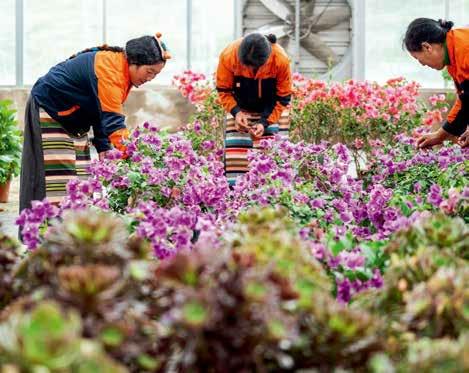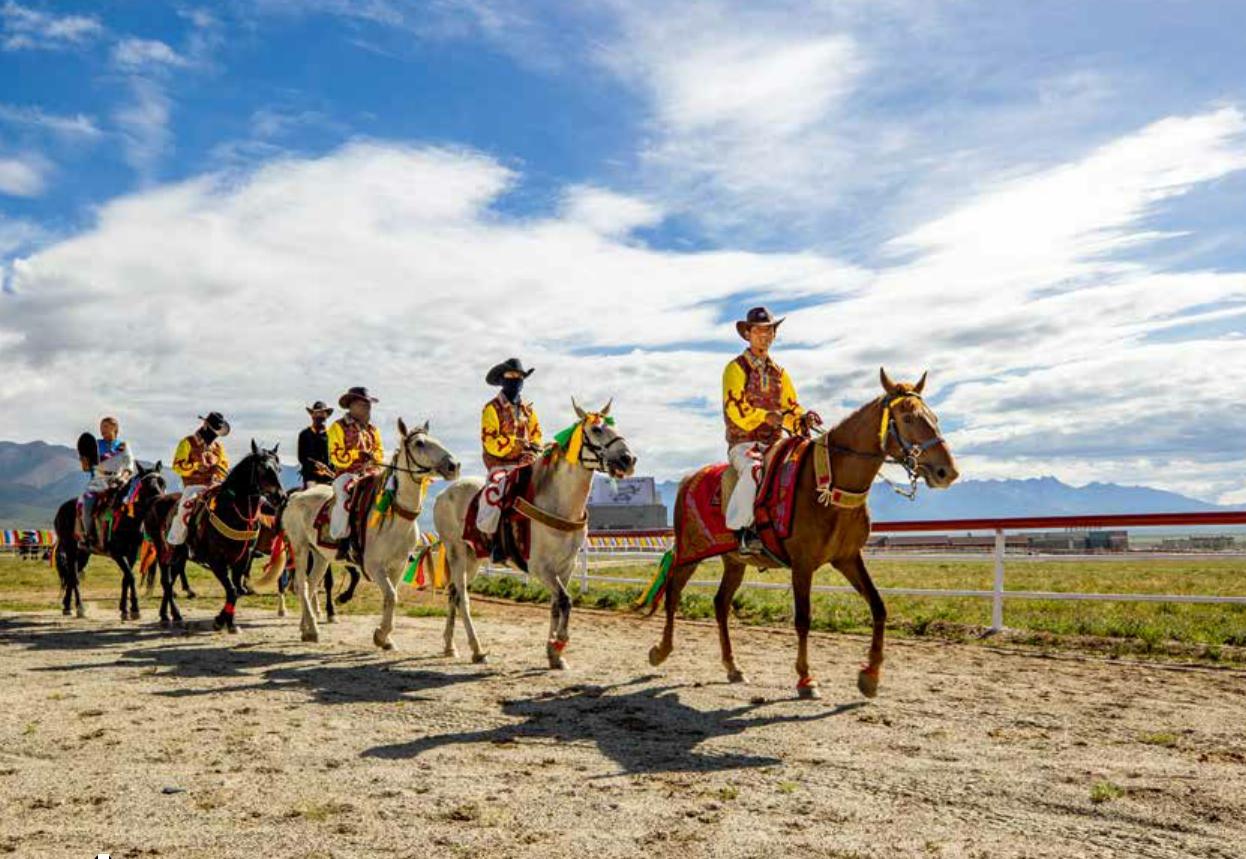Morning on the Plateau
2020-09-30byXuXun
by Xu Xun


Feudal serfdom and outright slavery were eventually abolished in Tibet on March 28, 1959. From then on, democratic reform began blazing a path to Tibets modernization.
That year, 74-year-old U.S. journalist Anna Louise Strong (1885-1970) scaled the Potala Palace and proclaimed: “I was the first American to see the liberation of Tibetan serfs and see liberated Lhasa from atop the Potala Palace.”
“They (the serfs) reacted to the news with elation because they can now keep the crops they grow instead of handing most of their harvests over to landlords and gain ownership rights to the land,” wrote Strong in a report. “They have broken the shackles that had been oppressing them for hundreds of years. They are now free and enjoy equality. They have found a new lease on life.”
It is a new day in Tibet. Reform and development in Tibet is entering a new era as China marches towards a moderately prosperous society in all respects during its fight to eliminate absolute poverty in the country this year.

Elderly Care Centers
One summer afternoon, 78-year-old Taphe recounted his story while sipping afternoon tea in a Tibetan building.
“I am old and have no family,” he revealed. “My neighbors in the village took care of me for a long time, so I owe them a lot.” He is satisfied with life in a care center, where nursing staff is available to help him and other residents make up a big, harmonious family.
Located in Qamdo City, Tibet Autonomous Region, the Dengqen County Elderly Care Center is one of the most important livelihood projects in Dengqen in recent years. According to Kalsang Dechen, head of the center, the facility covers 11,700 square meters and cost more than 58 million yuan (US$8.5 million) to build. Since it was opened in 2015, the center has offered services including health maintenance, nursing,rehabilitation, and hospice care, and supports more than 180 elderly people who depend on basic subsistence allowances.
The most vulnerable and impoverished residents of Tibets farming and pastoral areas can apply for allowances for food, clothing, shelter, medical care, and burial funds.
Demonstrating their commitment to the development of social welfare homes, rural nursing homes, and elderly care centers over the years, the Party committee and government of the Tibet Autonomous Region renovated and built 95 elderly care centers to house more than 10,000 impoverished seniors. In 2016, Tibet accomplished its goal of providing support for all senior allowance-receivers who are willing to reside in nursing homes.

Plateau Training Center Even before dinner time, the aroma of fantastic food consumed the courtyard of Golog Town, Karub District, Qamdo City. In the 2,600-square-meter Karub District Employment and Start-up Training Center, a dozen trainees were having a cooking class. Presently, the center offers 27 programs on different skills and provides farmers and herders from neighboring areas with complementary training courses.
At the center, 23-year-old Padma Ngodrup and 19-year-old Chophel Karma were studying Tibetan thangka painting under Nyima Dondrup, a master of the Karma Gadri school of thangka, to hone delineating and coloring. A total of 13 trainees are now studying the art at the center, including recent high school graduates, middle school graduates, farmers, and herders.
“In contrast with other training courses, the thangka program features a longer schedule and only accepts students with some education,” said Nyima Dondrup. A thangka painting even by a trainee can sell for 3,000 (US$438) to 6,000 yuan (US$876). And a work may sell for as much as 10,000 yuan (US$1,460) after they graduate. Most orders come from hotels and religious venues presently.
“Since 2018, the center has organized 31 sessions of training programs for 2,525 people, of which 1,752 landed a job after completing training,” said Tashi Gonpo, vice head of the Karub District Administration of Human Resources and Social Security. “It aligns perfectly with local poverty alleviation efforts.” He noted that during their stay at the center, students are exempted from meal and accommodation fees. The government purchased teaching materials and covered all costs. Students dont have to spend a dime.
Gonpo said that each time the center launched a new course, the decision was based on careful and in-depth advanced market research and analysis. The training programs are tailored for the needs of economic development and the job markets of Tibet and even the whole country. “Students from our center are exactly what employers need,” he added.“They are more competitive, creative, and professional.”
Relocating for Better Living
Gyacho resides in Wupa Village, Chido Town, Tengchen County, Qamdo City. Due to poverty, he was unable to build his own house after getting married, which is expected according to Chinese tradition. For years, he and his family resided in a rented house. Two years ago, he finally moved into a new house thanks to a relocation program for poverty alleviation. “I never dreamed of owning my own house in Chido Town until I moved into this fantastic place in 2018,” Gyacho said.
Changchub shared a similar experience. Before she was relocated to Sayu Village next to the Lhasa River, she and her family lived in a valley in Chupu Village, Chushur Township in Lhasa. She, her father, and her fathers father were all herders. Even while still in middle school, Changchub was already taking turns tending the cattle on the hills. At the end of year, her family usually sold two yaks. One was traded for food and the other sold for cash. They lived frugally on only about 10,000 yuan(US$1,460) annually.
“If anyone in the family fell ill, we had to ride a horse more than 10 kilometers from where were herding to the village,”recalled Changchub. “Then, if we were lucky enough to get on a tractor ride, we could reach the township hospital.” In June 2016, Chinas relocation programs for poverty alleviation enabled Changchubs family to move into Sayu Village along with another 183 households. The woman considers the move one of her happiest memories ever.
“Thanks to all the helpful policies of the state, we neednt spend a penny owning a new house in Sayu,” Changchub continued. “The furniture was already provided, and all we needed to do was to move in.”
After moving to Sayu Village, Changchub opened a mobile phone shop selling SIM cards, air time, and broadband reups. This small business earns her a monthly income of more than 5,000 yuan (US$730). Her husband Lhapa Dondrup works as a cargo truck driver, and earns more than 60,000 yuan(US$8,758) a year. Her family income has multiplied by more than a dozen times since the relocation.
To achieve the goal of targeted poverty alleviation, the Party committee and government of the Tibet Autonomous Region implemented relocation programs covering 266,000 poverty-stricken people. From 2019 to 2020, efforts have been made to consolidate the achievements in this area. A total of 17.24 billion yuan (US$2.5 billion) is expected to be invested in relocation areas on projects such as construction of houses, supporting infrastructure, and basic public service facilities as well as land reclamation and ecological restoration in the vacated areas.